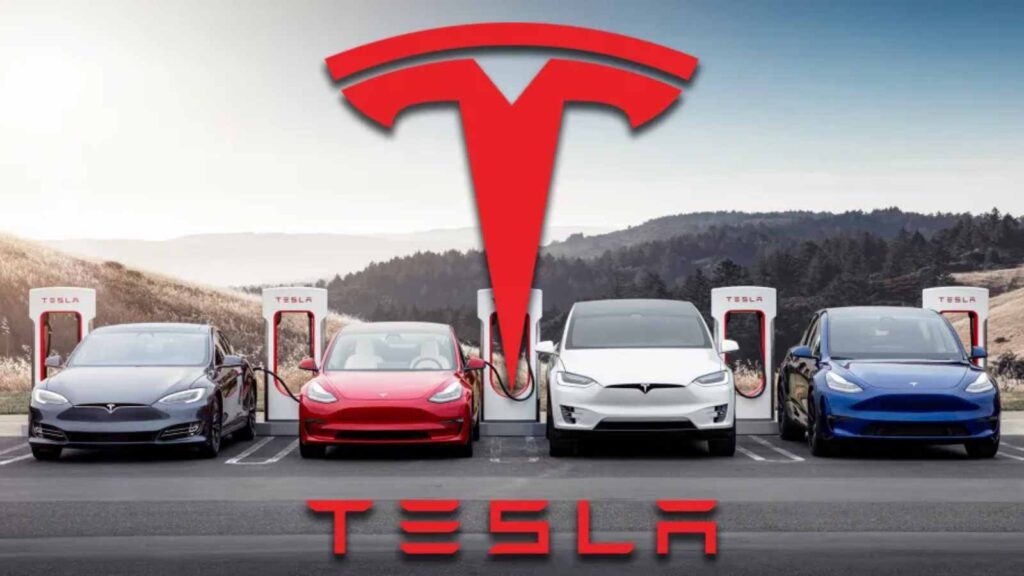Following Musk’s announcement that the business intends to begin manufacturing of an inexpensive new electric vehicle by the beginning of 2025, Tesla shares have increased by 13%.
According to Tesla, the company’s sales dropped by 9% in the first quarter, marking the most significant year-over-year loss since the year 2012.
Due to the fact that Tesla is facing growing competition all over the world, the stock price of the firm has decreased by more than forty percent as of the end of business on Tuesday.
When it comes to electric vehicles (EVs), sales growth is slowing down, and Tesla and major competitors have been lowering the pricing of EVs, on and off, for months in an effort to stimulate demand.
A Tesla shares
On Tuesday, the electric car manufacturer announced a 9% decrease in sales for the first quarter, which is the worst reduction since 2012, and missed the projections of analysts. This comes as the firm continues to deal with the impact of continued price cuts.
As a result of CEO Elon Musk’s announcement to investors that manufacturing of new inexpensive electric vehicle models might begin sooner than anticipated, the stock price increased during extended trading.

Comparing what the firm disclosed with what Wall Street was anticipating, according to a poll of analysts conducted by LSEG, the following is what happens:
Adjusted earnings per share came in at 45 cents, compared to the target of 51 cents.
$21.30 billion in revenue, compared to the anticipated $22.15 billion
A year ago, revenue was $23.33 billion, and in the fourth quarter, it was $25.17 billion. Additionally, revenue decreased from that amount. A year ago, the company’s net income was $2.51 billion, or 73 cents per share. However, this year, it has decreased by 55% to $1.13 billion, or 34 cents per share.
read more: Tesla Must Fire Elon Musk as CEO if It Is to Survive
The reduction in revenues was significantly more severe than the last decline that the corporation saw in 2020, which was experienced as a result of manufacturing disruptions brought on by the Covid-19 epidemic. In the first three months of 2024, Tesla’s automotive revenue was $17.38 billion, which was a 13% decrease from the previous year for the same period.
During the call, Musk said that the business intends to begin manufacturing of new models in “early 2025, if not late this year.” This is a change from the prior expectation, which was that production would begin in the second half of 2025. Musk also highlighted Tesla’s efforts in artificial intelligence infrastructure and said that the business is now in discussions with “one major automaker” to licence its driver assistance system. This technology is sold in the United States as the Full Self-Driving, or FSD, option.
According to the shareholder deck that Tesla sent to its shareholders, the company restated its bearish view for the year 2024, stating that “volume growth rate may be notably lower than the growth rate achieved in 2023.”
The shares of Tesla had dropped more than forty percent this year, hitting its lowest point since January 2023, before to the 13% increase that occurred after hours. This decline was caused by worries over the company’s continued price reduction, as well as competition in China and lacklustre deliveries. In the beginning of this month, Tesla revealed that the number of vehicles delivered during the first quarter was 8.5% lower compared to the previous year.
According to the deck, the business has said that it is speeding up the introduction of “new vehicles, including more affordable models,” which will “be able to be produced on the same manufacturing lines” as Tesla’s existing portfolio of automobiles. The goal of Tesla is to “fully utilise” its existing production capacity and to achieve “more than fifty percent growth over 2023 production” before making any investments in new production lines.
During the presentation, Tesla also displayed displays that displayed a ride-hailing service that was built on robotaxis. For years, the business has been promising to produce a car that is capable of driving itself, but they have not delivered on Musk’s claim.
Electric vehicle (EV) sales are experiencing a slowdown, and Tesla and its primary competitors have been lowering the pricing of EVs in an effort to stimulate demand. In the first quarter of this year, Tesla’s gross earnings dropped by 18%, in part because of price reductions that were implemented.
During the call, Musk said, “We think Q2 will be a lot better.” This after a discussion of the operational problems that were encountered during the first quarter, which included disruptions to the supply chain in the Red Sea.
Revenue from previous purchases of Tesla’s FSD option was included in the overall sales, according to Tesla. With the launch of a function in North America known as Autopark, the corporation was able to recognise the income that had been waiting to be collected.
According to estimates provided by Chris Redl, an automobiles analyst at Siena Capital, Tesla recorded as much as 700 million dollars in deferred revenue from FSD during the quarter. After taking into account regulatory credits, this amounts to around 4.3% of Tesla’s income from the automotive sector.
Two executives, Drew Baglino and Rohan Patel, resigned from their positions at Tesla last month, marking the beginning of a major and extensive reorganisation. Musk said in a statement sent to all employees of the firm that the carmaker was laying off more than ten percent of its personnel throughout the world.
To reach $2.77 billion, capital expenditures increased by 34% compared to the previous year’s total.
During the quarter, the firm reported a loss of $2.53 billion, which resulted in a negative free cash flow. Tesla recorded a free cash flow of $441 million in the fourth quarter of the previous year, which increased to $2.06 billion in the fourth quarter of this year. The negative amount was ascribed by Tesla to a buildup of inventory that totaled $2.7 billion and capital expenditures that totaled $1 billion on “AI infrastructure.”
When compared to the same time period in the previous year, Tesla’s energy business had a 7% gain in sales, reaching $1.64 billion, while the company’s services and other division saw a 25% increase, reaching $2.29 billion.
During the results call, Musk was questioned about whether or not he has any plans to quit Tesla on account of his multiple duties, which include directing SpaceX, owning X (which was previously known as Twitter), and operating other firms.
Musk could not offer an answer, but he did say that he spends the bulk of his time at work, that he seldom even takes a Sunday afternoon off, and that he would endeavour to ensure that Tesla is “very prosperous.”
During the call’s conclusion, Martin Viecha, who is the vice president of investor relations at Tesla, said that he would be departing the firm in a couple of months, after having been there for seven years. He was thanked by Musk.

1 thought on “Tesla shares rise 13% as Musk predicts it would produce inexpensive EVs by early 2025.”